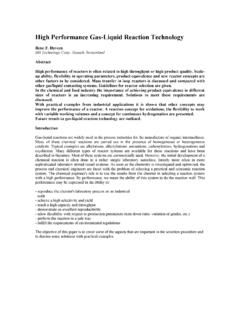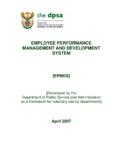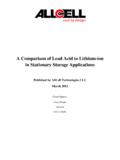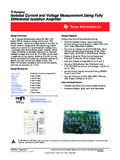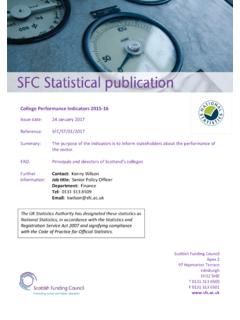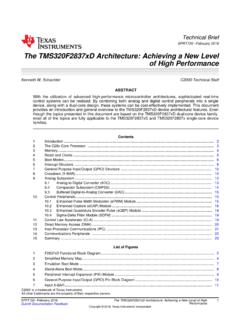Transcription of Cost Estimates of Near-Term, Fully-Reusable Space Access ...
1 1 American Institute of Aeronautics and Astronautics Cost Estimates of Near-Term, Fully-Reusable Space Access Systems* James Michael Snead, Air Force Research Laboratory, Wright-Patterson Air Force Base, Ohio Abstract The Air Force Research Laboratory and the Air Force Aeronautical Systems Center have completed in-house and contracted conceptual design analyses of near-term, two-stage, vertical takeoff and horizontal landing, Fully-Reusable Space Access systems to transport passengers and cargo to and from low Earth orbit.
2 These efforts have identified closed vehicle designs using mature technologies. These designs and related Estimates for ground support requirements have been used to prepare rough order of magnitude (ROM) Estimates for the development, production, and recurring operational costs of these systems. The costing methodology in Koelle s Handbook of Cost Engineering for Space Transportation Systems has been used to estimate the development and production costs. A separate methodology, based on Estimates of the direct support labor requirements, has been used to prepare an estimate of the recurring costs.
3 This paper summarizes the conceptual reusable Space Access system design results, describes the application of Koelle s costing methodology, reports the ROM cost Estimates , and compares these costs against prevailing Space Access costs. The paper concludes with a brief discussion of an infrastructure-style funding approach to develop and acquire these near-term, Fully-Reusable Space Access systems. Introduction In the accompanying paper, Achieving Near-term, Aircraft-like Reusable Space Access , the introduction discusses the existence of a perceived barrier to achieving near-term, Fully-Reusable Space Access for transporting passengers and cargo to low Earth orbit (LEO) with aircraft-like safety and operability.
4 [1] Overcoming this barrier is critical if the United States is to become a true spacefaring nation. That paper detailed arguments on why reusable Space Access systems were the preferred choice for the routine transport of passengers and cargo to low Earth orbit (LEO); how reusable Space Access systems with aircraft-like safety and operability could be developed; and, what near-term, Fully-Reusable Space Access system concepts could be pursued. This paper picks up where that paper left off by addressing the critical issue of the cost and affordability of developing and operating near-term, Fully-Reusable Space Access systems.
5 This paper begins with a more detailed description of how the near-term, Fully-Reusable Space Access system * Distribution A: Approved for public release; distribution unlimited by AFMC 06-290 and AFRL 06-0073. Aerospace engineer, AFRL/XPA, AIAA Senior Member, 2 American Institute of Aeronautics and Astronautics concepts were generated and how these government Estimates compare with those generated by industry.
6 The paper continues with a description of the process used to generate development, production, and operational rough order of magnitude (ROM) cost Estimates for a near-term, two-stage-to-orbit (TSTO), Fully-Reusable Space Access system. Finally, the paper concludes with a summary of the cost Estimates and a brief discussion of how these costs can be borne within the current federal government budget. Section 1: Background Defining a Near-Term System Design A near-term system design is one that can enter full-scale system development without first requiring significant additional enabling technology maturation.
7 Within the aerospace community, one method commonly used to assess the maturity of a proposed system design is to evaluate the maturity of the enabling technologies. For this purpose, the National Aeronautics and Space Administration (NASA) has developed a Technology Readiness Level (TRL) scale on which any technology from the initial raw observations to the final operational application can be ranked (see Figure 1). To be considered a mature design sufficient to support a decision to proceed with full-scale system development, all enabling technologies need to have achieved at least a TRL of 6 system/subsystem model or prototype demonstration in a relevant environment (ground or Space ) prior to a formal decision to initiate system development.
8 With this level of maturity, a normal pace of system development will produce a production design in 3-4 years and a first production article in 5-6 years. A relevant Figure 1. Technology readiness level scale (courtesy of NASA). 3 American Institute of Aeronautics and Astronautics benchmark is the Space Shuttle that started development in 1972 and was ready for first flight in 1980 about 8 years.
9 However, many critical technologies, such as the thermal protection tiles and reusable rocket engines were only TRL 3-4 at the beginning of the system s development resulting in the development period being extended 2-3 years. Another relevant benchmark was the early 1990s Delta Clipper Experimental single-stage rocket technology demonstrator. This 40,000 lb subscale, liquid hydrogen/liquid oxygen fueled, reusable rocket engine-propelled, low-speed demonstrator of a single-stage reusable Space Access system used TRL 8-9 technologies and went from the preliminary design review to the first flight in about 18 months, demonstrating the value of using mature technologies.
10 Reusable Military Launch System Design/Analysis Team As Air Force interest in reusable Space Access and, in particular, operationally responsive spacelift re-emerged in 2001, efforts were initiated to improve the Air Force s ability to predict and compare conceptual designs for Fully-Reusable and partially-reusable Space Access systems. An informal joint government-industry partnership, called the Reusable Military Launch System (RMLS) Team, was organized. This team included the Air Force Research Laboratory (AFRL), Air Force Materiel Command s Aeronautical System Center s Engineering Directorate (ASC/EN), Air Force Flight Test Center, Air Force Space Command, NASA Kennedy and Johnson Space Centers, and industry.
